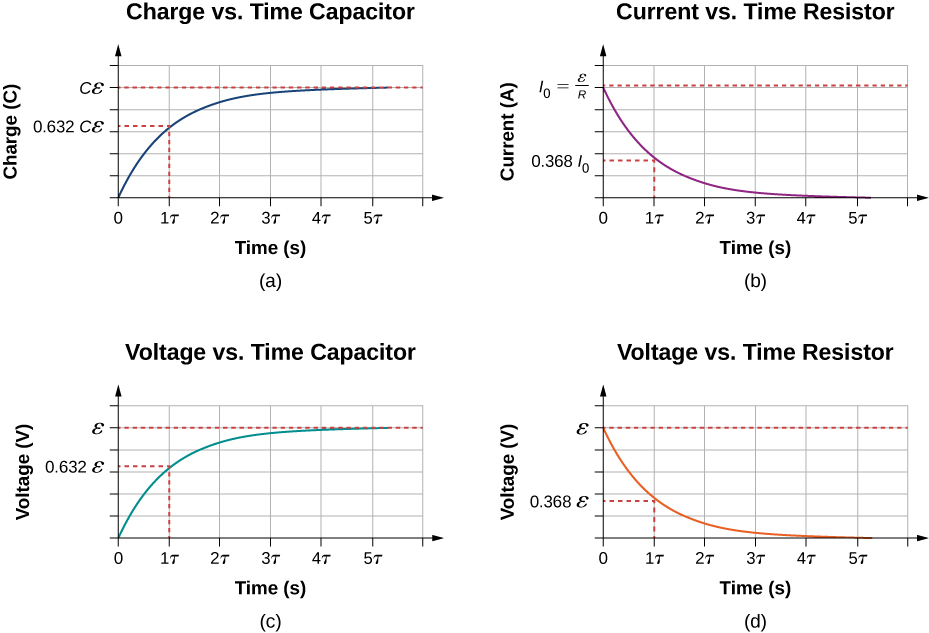If Ic is charging current through capacitor then Ic is maximum at the beginning and it slows starts getting smaller until the capacitor is fully charged or the Potential difference built across capacitor is equal to the supply voltage V. The charging current asymptotically approaches zero as the capacitor becomes charged up to the battery voltage. Consider a circuit having a capacitance C and a resistance R which are joined in series with a battery of emf ε through a Morse key K as shown in the figure.
When the key is presse the capacitor begins to store charge. I understand this behavior via equations. A capacitor usually consists of two conductors placed close to each other, separated by an insulator. It stores electrical charge in units that are called a farad.
Common capacitor values typically range from picofarads to nanofarads to microfarads. CHARGING AND DISCHARGING A CAPACITOR. The equation of the charging of a capacitor has become.
Now, we can draw the variation of voltage across the capacitor with time after switching on the circuit. This is as shown below. In this article, you will learn about charging and discharging a capacitor. When a voltage is applied on a capacitor it puts a charge in the capacitor.
So at the time t = RC, the value of charging current becomes 36. Because the current changes throughout charging, the rate of flow of charge will not be linear. Then the capacitor starts charging with the charging current (i) and also this capacitor is fully charged.
The charging voltage across the capacitor is equal to the supply voltage when the capacitor is fully charged i. When the capacitor is fully charged means that the capacitor maintains the constant voltage charge even if. Comment on the limit of zero resistance. So now, because the charging current has reduce the rate at which the capacitor voltage charges also reduces. Here are some of them: Flash Lamp.

Constant current charging of a capacitor means that the voltage across the capacitor, during the period of charging, is made to increase perfectly linearly e. An animation illustrating the process of charging a capacitor. Electrons flow onto one plate, creating a region of negative charge that generates an electric fiel repelling the electrons on the second plate.

The rate of charging is typically described in terms of a time constant RC. In physics and engineering, the time constant, usually denoted by the Greek letter τ (tau), is the parameter characterizing the response to a step input of a first-order, linear time-invariant (LTI) system.
When an external voltage is given, the electric charge gets converted into electrostatic charge. The positive potential of the supply, attracts the electrons from the positive plate of the capacitor, making it more positive. The simulation shows a capacitor being charged through a resistor.
The left hand meter shows the voltage across the resistor. Considering the charging as a function of time we can also determine the amount of charge on a capacitor after a certain period of time when it is connected across the battery as shown in Fig. What happens when a capacitor is charging ? How does charging really work? To help concentrate on the capacitor we assume the load is purely resistive, and ignore any effects of an attached inductor.
A capacitor is a device that is used to store electrical charge and electrical energy. A basic capacitor consists of two metal plates separated by some insulator called a dielectric. The ability of a capacitor to hold a charge is called capacitance.
Players will be able to fill the XP capacitor while training with augmented items. Whenever an item gains item experience, 50% of it is stored in the capacitor instead. Charging a capacitor.
Inga kommentarer:
Skicka en kommentar
Obs! Endast bloggmedlemmar kan kommentera.